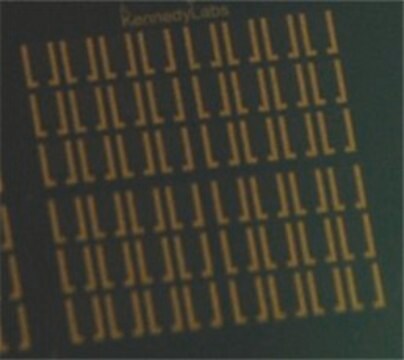S150-05F
Human Skeletal Muscle Cells: HSkMC: Pre-Screened for Insulin & AMPK signaling, fetal
Sign Into View Organizational & Contract Pricing
All Photos(2)
About This Item
UNSPSC Code:
12352204
Recommended Products
biological source
human skeletal muscle (normal limb)
packaging
pkg of 500,000 cells
growth mode
Adherent
karyotype
2n = 46
morphology
Skeletal muscle
technique(s)
cell culture | mammalian: suitable
relevant disease(s)
muscular dystrophy
shipped in
dry ice
storage temp.
−196°C
General description
Lot specific orders are not able to be placed through the web. Contact your local sales rep for more details.
Our pre-screened Human Skeletal Muscle Cells (HSkMC) are isolated from the skeletal muscle of hamstrings and retain morphological, biochemical, and metabolic characteristics of skeletal muscle. Pre-screened HSkMCs can undergo differentiation to exhibit actin and myosin myofilaments and are specially tested for functional AMPK and Insulin Signaling Pathways.
1. AMPK Signaling Pathway
AMP-activated protein kinase (AMPK) is a major cellular regulator of lipid and glucose metabolism and mediates the metabolic changes associated with exercise. AMPK phosphorylates and inhibits activity of acetyl CoA carboxylase (ACC), the enzyme responsible for making malonyl-CoA which is required for fatty acid chain elongation.
2. Insulin Signaling Pathway
Skeletal muscle is one of major target tissue of insulin action. Upon insulin binding, insulin receptor tyrosine kinases catalyze autophosphorylation of tyrosine residues providing docking sites for downstream signaling components, such as IRS-1 and Grb2, which relay the signaling further into the cell (see Fig.B).
Our pre-screened Human Skeletal Muscle Cells (HSkMC) are isolated from the skeletal muscle of hamstrings and retain morphological, biochemical, and metabolic characteristics of skeletal muscle. Pre-screened HSkMCs can undergo differentiation to exhibit actin and myosin myofilaments and are specially tested for functional AMPK and Insulin Signaling Pathways.
1. AMPK Signaling Pathway
AMP-activated protein kinase (AMPK) is a major cellular regulator of lipid and glucose metabolism and mediates the metabolic changes associated with exercise. AMPK phosphorylates and inhibits activity of acetyl CoA carboxylase (ACC), the enzyme responsible for making malonyl-CoA which is required for fatty acid chain elongation.
2. Insulin Signaling Pathway
Skeletal muscle is one of major target tissue of insulin action. Upon insulin binding, insulin receptor tyrosine kinases catalyze autophosphorylation of tyrosine residues providing docking sites for downstream signaling components, such as IRS-1 and Grb2, which relay the signaling further into the cell (see Fig.B).
Cell Line Origin
Muscle
Application
lipid and glucose metabolism, exercise, insulin action, cell signaling
Components
Basal Medium containing 10% FBS & 10% DMSO
Preparation Note
- 2nd passage, >500,000 cells in Basal Medium containing 10% FBS & 10% DMSO
- Can be cultured at least 15 doublings
Subculture Routine
Please refer to the HSkMC Culture Protocol.
Storage Class Code
11 - Combustible Solids
WGK
WGK 3
Flash Point(F)
Not applicable
Flash Point(C)
Not applicable
Certificates of Analysis (COA)
Search for Certificates of Analysis (COA) by entering the products Lot/Batch Number. Lot and Batch Numbers can be found on a product’s label following the words ‘Lot’ or ‘Batch’.
Already Own This Product?
Find documentation for the products that you have recently purchased in the Document Library.
Our team of scientists has experience in all areas of research including Life Science, Material Science, Chemical Synthesis, Chromatography, Analytical and many others.
Contact Technical Service







